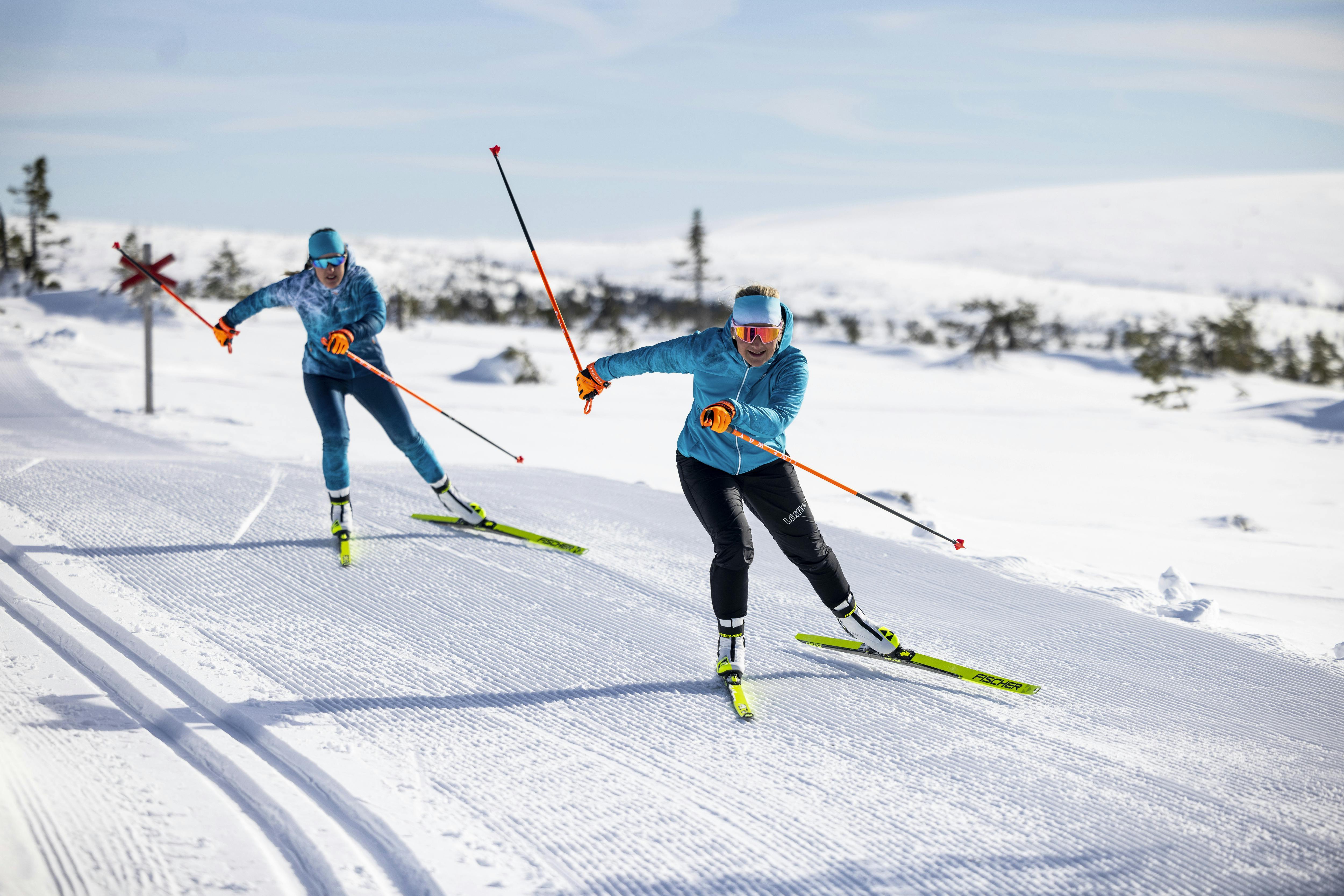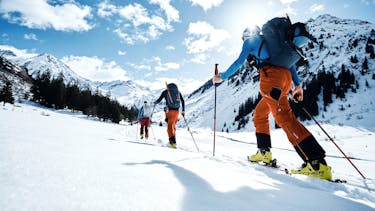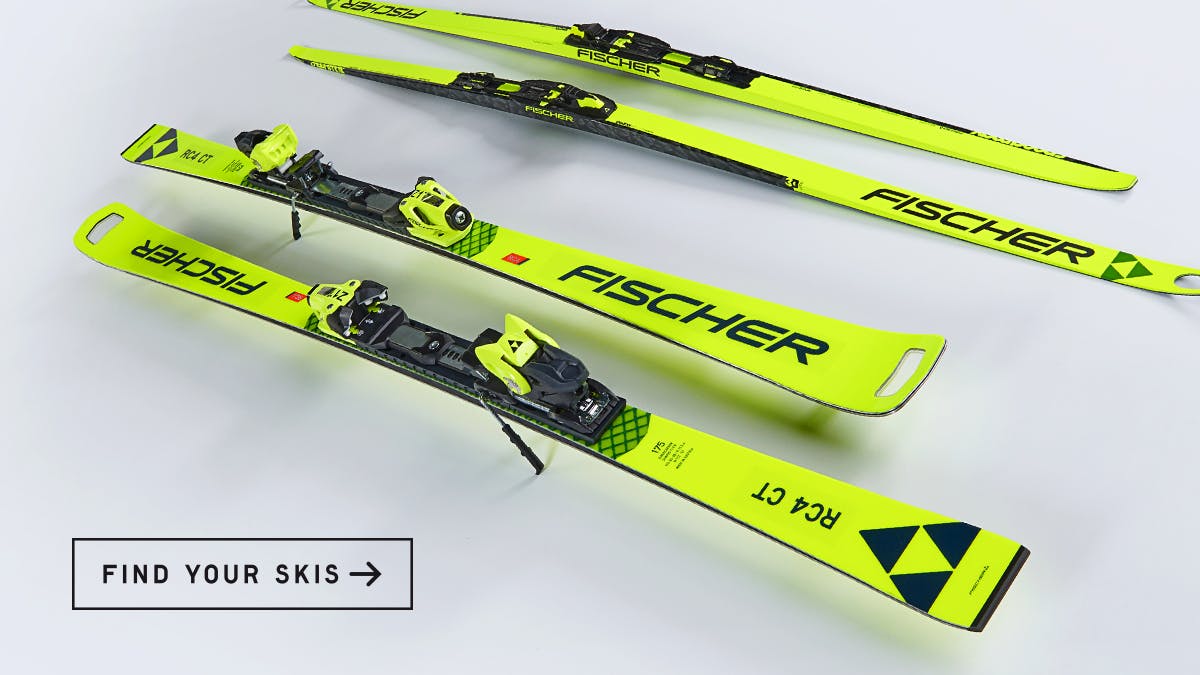Correct ski length: recommended lengths for women, men and children
Key factors
The right length ski is essential to really enjoying skiing. Control, turning, and stopping will all be more precise with less effort. Three factors need to be considered for ski length.
- Height
- Ability level
- Type of skiing
There are no specific, exact standards for skiers to reference. All tables and charts are just guidelines. You might receive a recommendation in the table that you find is not the best ski for you. But it will definitely be a good starting point.
Men vs. women
Ski length has no relation to gender. The only time gender comes into play is in the flex of the ski, which needs to match the weight of a skier at a certain height. The position of the binding on the ski is also different for men and women.
Let’s look at basic length guideline for skiers based on ability levels. Note that skis are always sold in centimeter lengths.
Beginners: Height minus 10-15cm
Advanced: Height minus 5-10cm
Expert: Skier’s height and up to 5cm longer
Remember, two of our critical factors are missing; and the same skier would not necessarily want or need the same length touring ski as carving ski, for example. The skier’s weight is not a factor in ski length. In general, that can be addressed by choosing a ski with a higher flex rating. Here is a guideline for ski length for adults based only on height:
| Height (cm) | Recommended ski length (cm) |
|---|---|
| 150-160 | 145-155 |
| 160-170 | 150-165 |
| 170-180 | 165-175 |
| 180-190 | 175-185 |
Kids
Determining the correct length for a kids’ ski is even less of a precise science than it is for adults. Age can only be a guideline since kids grow at such vastly different rates, and ability levels are also extremely varied.
There are some valid tips, though:
- Kids’ skis are intended for children whose height is a amximum of approximately 155cm. Above that height an adult ski might be needed.
- Kids generally require new skis every year or two. If realistic, buying a ski at the high end of the recommended range can be a good idea. It may take more time getting used to it the first season, but the child may also be able to use it, even more skillfully, the next season.
- Always remember that kids are still learning, and need the proper gear, in the proper sizes, in order to develop the good skiing technique and habits they will have for the rest of their lives.
Here is a more comprehensive table showing how the length of kids’ skis may be determined:
Recommended ski length for kids
| Height (cm) | Age | Skill level | Ski length recommendation |
|---|---|---|---|
| Bis 115 cm | 6 | beginner | armpit/shoulder height |
| fairly good | chin/nose height | ||
| advanced | forehead height | ||
| Bis 135 cm | 9 | beginner / fairly good | chin/nose height |
| advanced | same as height | ||
| Bis 155 cm | 12 | beginner / fairly good | nose/forehead height |
| advanced | height + 5-7 cm |

Different ski types
Every type of skiing, from all-mountain to touring, and more, places different demands on skis, affecting the ideal length. Ski style and terrain conditions, along with the skier’s ability have a unique effect on ski performance.
Cross-country ski length
Height is a good indicator of the right cross-country ski, because we can really narrow down what the ski is being specifically used for.
- Classic skiing on a groomed track: Height plus 20cm
- Classic cruising on open terrain: Height
- Skating: Height plus 5-10cm
Body weight is also a factor in cross-country ski selection since the glide phase is so important. Relatively heavy skiers should add 5cm from the recommendation above. Relatively light skiers should subtract 5cm from the recommendation above.

Freeride and touring ski length
These skis both cover any and all terrain in a wide variety of conditions, but they would require different lengths if the same skier were to buy a pair of each. Touring skis should be 5-15cm less than the skier’s height. Skilled skiers might easily use a ski that is the same as their height. Touring ski length is a balance between lightweight maneuverability on the way up and stability on the way down. Freeride skis should be at least the skier’s height and can easily be 5-15cm longer for skilled skiers. Longer skis here mean better buoyancy in powder.
All-mountain ski length
These skis are for a wide variety of conditions, and equal time spent on-piste and off-piste. If you’re a fast skier, typically off-piste, and large radius turns are your thing, you’d need a longer all-mountain ski, based on the above table. A skier the same size and ability, who is more of a relaxed skier on groomed slopes and enjoys sharp, precise turns, would want a shorter all-mountain ski, based on the table above.
Carving ski length
There are three distinct types of carving ski:
- All-around (Sport) carvers are 165-180cm.
- Slalom carvers are 155 – 170cm.
- Race carvers are typically 170 – 185cm.
These are official guidelines per the German Ski Federation. However, like any other ski, various factors come into play. Faster skiers carving tight turns will want a shorter ski; while skiers in softer, deeper snow might be happier with the better floating ability of a longer, more stable ski.

Ski length for beginners
You probably have no extreme demands or radical plans. You just want to know what ski length makes sense for you as a beginner. A good guideline for a typical all-around beginner’s ski, which would be a wise choice for a new skier, is height minus 5-10cm. When in doubt, a slightly shorter ski is the right decision. The extra control and maneuverability are well worth the stability at speed you may sacrifice. There’s a limit to this strategy, though. Skis that are too short for you will be extremely sensitive to any input, which will make them impossible to control for someone with beginner’s skills.
These guidelines and tips should get you closer to perfect days on the slopes. For further help, ski specialty stores have years of experience with every different brand, material, and individual need. They are your best resource when it’s time to buy new skis, especially if you’ve done research yourself and understand the subtleties.

